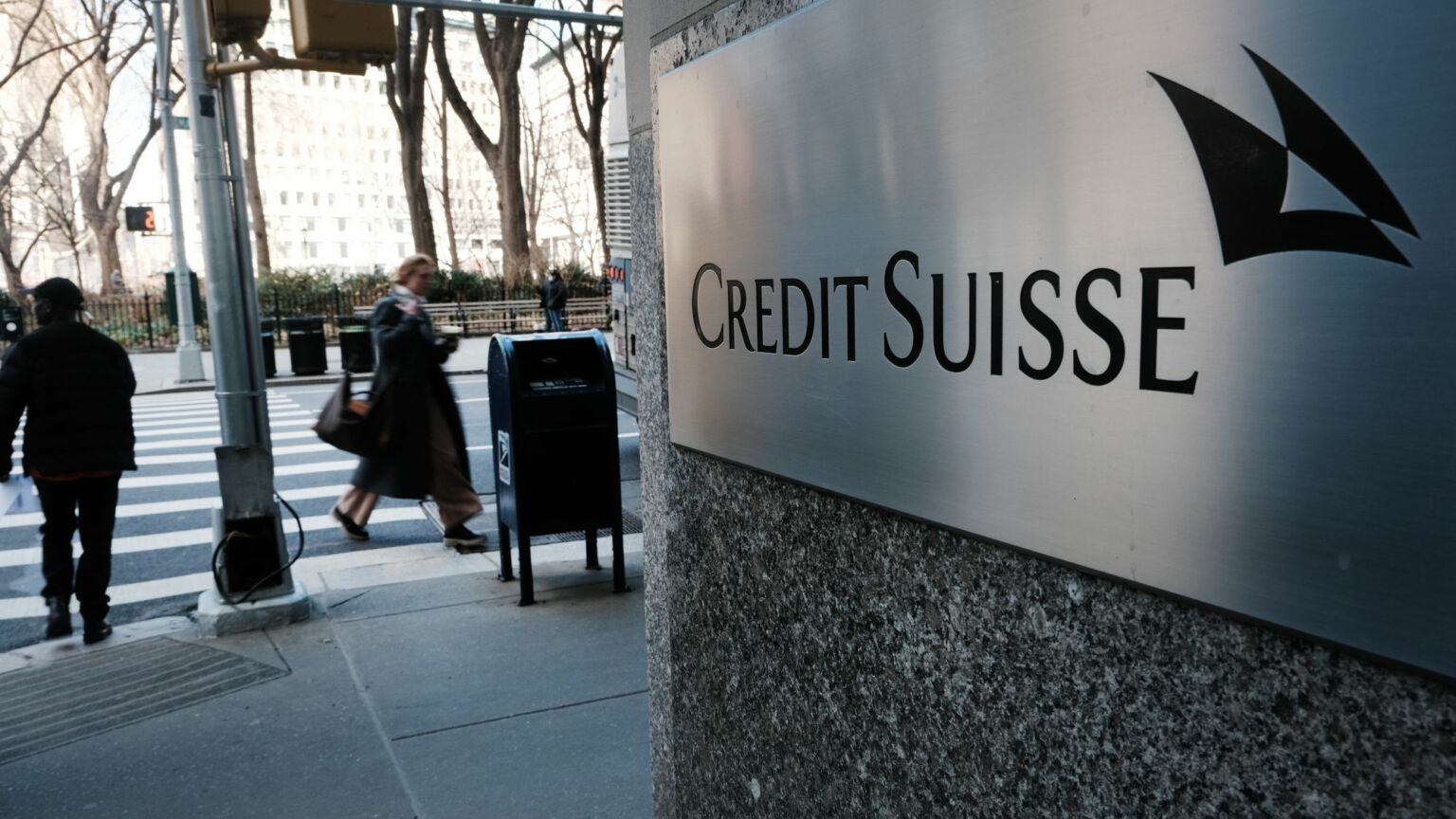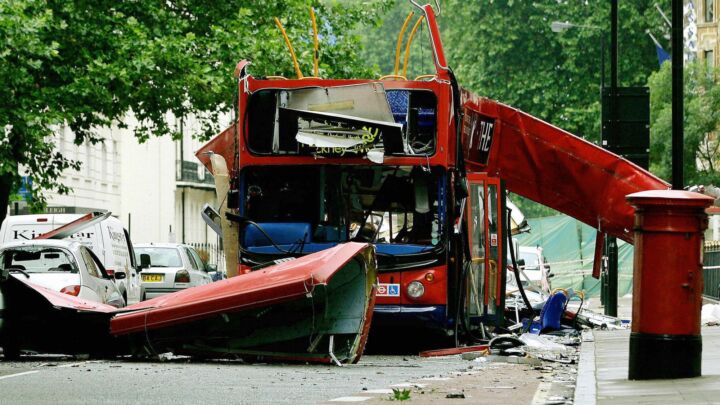This is a financial crisis waiting to happen
The collapse of Credit Suisse and Silicon Valley Bank ought to set alarm bells ringing.

Want to read spiked ad-free? Become a spiked supporter.
The collapse of Silicon Valley Bank and Credit Suisse this month ought to be a wake-up call. The fall of these two very different banks points to a deeper underlying malaise in the world’s advanced economies.
Earlier this month, depositors became concerned that Silicon Valley Bank (SVB) could be in serious trouble. SVB management had apparently failed to undertake the standard banking practice of hedging – in other words, insuring – its expanded holdings of US government bonds against the prospect of rising interest rates. So, because prices and yields move inversely in the world of bonds, the US Federal Reserve’s decision to increase interest rates caused bond yields to rise, and the value of SVB’s bonds holdings to fall. This left a hole in SVB’s assets. The tech start-ups and venture capitalists that deposited in SVB feared it could soon become insolvent. And so they rushed to withdraw their deposits before the money ran out. A bank run ensued.
Credit Suisse’s particular troubles were different. After several years of financial and reputational disasters, depositors and investors in Switzerland’s second-largest bank were already losing confidence in it. Customers withdrew the equivalent of $133 billion of deposits last year, which contributed to it making an annual loss of about $7.9 billion – its biggest loss since the financial crisis in 2008.
Credit Suisse published its delayed annual report last Tuesday, amid much market anxiety following the collapse of SVB and another US firm, Signature Bank. Credit Suisse’s admission of ‘material weaknesses’ in its financial controls – rather essential for a huge international bank – was the final straw. Concerns about this latest Credit Suisse foul-up triggered another share-price rout. The Swiss authorities stepped in with an emergency central-bank loan. When that failed to stabilise matters, they orchestrated its forced takeover by its local rival, UBS.
Some have blamed the West’s leading central banks, especially the US Fed, for SVB and Credit Suisse’s demise. They claim that central bankers’ decision to delay interest rate rises, only to raise them aggressively as inflation began to spiral last year, made things very tough for the likes of SVB. But blaming these banks’ collapse on an interest-rate hike ignores the deeper problem. The truth is that Western economies have been held afloat artificially since the 2008 financial crisis, courtesy of super-easy monetary policies. And now we’re starting to pay the price.
Over the past 15 years, ultra-low interest rates combined with central-bank purchases of financial assets – a policy known as quantitative easing – kept the liquidity taps open. This provided the cheap and easy credit that kept the economy afloat during the 2010s, despite the absence of a genuine post-crisis economic recovery. The state’s economic interventions effectively preserved the old pre-2008 economy, sustaining weak companies and preventing the economic restructuring that one would normally expect after a recession. As a result, business investment levels and productivity growth never re-established their pre-crisis tempo.
In the eyes of Western governments, this looked like a success. After the crash, it appeared as if we’d returned to economic normality. Sure, the rich were getting richer faster as their existing financial wealth rapidly increased. But alongside that, employment levels were expanding and output was increasing, albeit at a slower rate than before the crash. Most people who wanted jobs could get one, even if many of the new ones in the ‘gig economy’ were increasingly insecure.
But the appearance of economic health during the 2010s was a sham. Throughout this period, the developed economies failed to renew their productive capabilities. Instead, much of the seeming economic recovery owed a great deal to an increasingly wealthy China, which helped the US and other advanced economies out of recession through lending and providing a growing market for imports. Meanwhile, on the domestic front, just about everything that moved in the mature economies was driven by central banks’ extraordinarily loose monetary policies. This includes: company survivals, new business launches, rising employment, debt-based household consumption, public-spending growth, rising prices for property, equity, crypto and other financial assets.
And all the time this state-backed money creation was synthetically propping things up, troubling trends were spreading through the financial markets. Prices became further detached from any underlying value-creation. Bubbles were identified in everything from commercial property to fine wines. This surely meant that another bout of financial instability was on its way, although no one could predict where or when it would strike.
By the middle of the 2010s, spiked was not alone in highlighting the mounting dangers from these ultra-easy monetary policies. For instance, in 2015, the Bank for International Settlements, known as the central bankers’ central bank, was already warning of the dangers easy monetary policies posed to the financial markets and to the public at large.
But no response was forthcoming. Elected governments continued to abdicate responsibility for economic policymaking, claiming that the central banks were ‘the only game in town’. Central bankers would often point out that they had limited means to influence economic developments. But governments refused to listen, and continued to let central banks manage their nations’ economies on their behalf.
Sometimes central bankers did try to reverse the direction of travel, for instance, by slowly raising interest rates and reducing quantitative easing. But, as the 2013 ‘taper tantrum’ in the US showed, the fear of prompting financial instability usually caused them to stop. Exceptionally loose monetary policies became accepted as entirely normal. This has meant that even before the unprecedented central-bank interventions during the Covid lockdowns, the stresses and strains had been building for years in financial markets and institutions.
Governments and central banks have found themselves stuck between a rock and hard place. Either the easy monetary policies continued, ramping up debt and financial fragilities. Or they were reined in, causing actual breakages in the system, which we are now seeing with SVB and Credit Suisse.
There are many other financial timebombs out there. Not just in the big and mid-sized banks, but also in the world of so-called shadow banking. This network of non-bank financial intermediaries has itself been boosted by decades of accommodating liquidity. It includes hedge funds, private-equity groups, insurance and pension institutions, payday lenders and many more. All of them could be experiencing similar pressures to the banks.
Whether these other timebombs explode in the near future or much later down the line is irrelevant. The key question now is how to respond to the next financial crisis. Over the past 15 years, banks in the advanced economies have been heavily regulated. They have effectively become wards of the state. But as the cases of SVB and Credit Suisse show, that still hasn’t been enough to stop some of them from collapsing.
When the next cohort of regulated or shadow financial institutions fails, will we see the state indulge in further artificial money creation? Will we see another set of financial wrecks taken into state care? Or will the state find that it has exhausted its counter-crisis tools?
It should be said that there are no absolute limits to the state’s ability to keep financial institutions afloat. But the stresses and strains will continue to pile up. What’s more, Western countries may find it harder to muddle through their financial and economic troubles given the increasingly fraught geopolitical situation. There may well be no help from China the next time we experience a crash.
These are perilous times. But the worst thing we could do is look away. It’s time we faced up to the seriousness of our economic plight.
Phil Mullan’s Beyond Confrontation: Globalists, Nationalists and Their Discontents is published by Emerald Publishing. Order it from Emerald or Amazon (UK).
Picture by: Getty.
Who funds spiked? You do
We are funded by you. And in this era of cancel culture and advertiser boycotts, we rely on your donations more than ever. Seventy per cent of our revenue comes from our readers’ donations – the vast majority giving just £5 per month. If you make a regular donation – of £5 a month or £50 a year – you can become a and enjoy:
–Ad-free reading
–Exclusive events
–Access to our comments section
It’s the best way to keep spiked going – and growing. Thank you!









Comments
Want to join the conversation?
Only spiked supporters and patrons, who donate regularly to us, can comment on our articles.